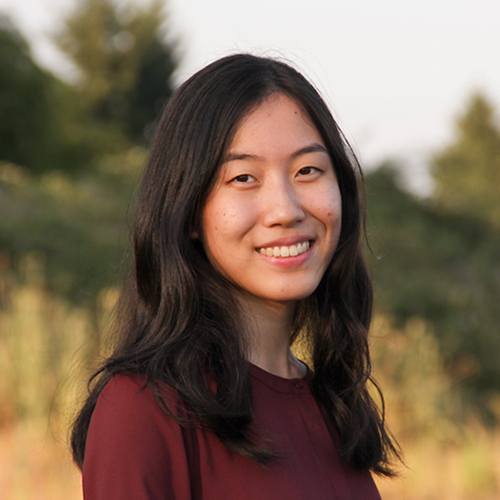Some artists work with paint. Others favor clay or fabric. But artist James Turrell’s medium is more ephemeral: light. His artworks isolate light, giving it form, depth, and mass.
Most of Turrell’s works are created for exhibits and then dismantled. His current exhibit at the Henry Art Gallery, James Turrell: Knowing Light, includes several temporary large-scale installations. But on July 11, the Henry Gallery unveiled a permanent Turrell “Skyspace”—a freestanding enclosed chamber designed for viewing the sky—in celebration of the museum’s 75th anniversary. It is one of only four public Skyspaces in the U.S.
“Turrell’s work is fascinating to me because the medium itself—light—is a remarkable material to choose as an artist,” says Richard Andrews, director of the Henry Art Gallery. “He has explored the effect of light on space and perception consistently for the past 30 years.”

The Skyspace, located in the museum’s sculpture court, is an elliptical pavilion that “floats” eleven feet above the ground on two concrete columns. Visitors enter the structure through the museum’s original 1927 door, then sit on a bench that runs along the building’s interior. The back of the bench is tipped slightly, encouraging visitors to look up at the sky through a large opening in the ceiling.
While the opening is reminiscent of the Pantheon in Rome, the effect is quite different. In the Pantheon, the sky seems remote; in the Skyspace it appears to be close to the viewer.
The appearance of the Skyspace’s interior varies by time of day and atmospheric conditions. During daylight hours, the inner chamber is a place of quiet contemplation, where the sky appears isolated from its surroundings, framed by the precise circular roof opening high above. Sunrise and sunset offer the most dramatic viewing experiences.
“As it shifts toward twilight, the appearance of the room changes from a white room with blue sky above to a more yellow room,” says Andrews. “The change is entirely due to the external light.”
The space can accommodate up to 18 visitors at one time. It is designed to withstand light rain, but in more inclement weather a movable roof will be closed and a light in the interior will create an intriguing visual effect known as a Ganzfeld, which Andrews describes as “an evenly illuminated featureless space” that appears to be—but is not—a solid surface. “With this design, even in bad weather the Skyspace will still be a Turrell art experience,” says Andrews.
Exterior lighting adds another dimension. The structure’s translucent exterior shell incorporates computerized LED lighting—designed for energy efficiency—that slowly changes color over time, providing soft luminescence at night and on cloudy days. The glowing structure, which Andrews describes as “a translucent glass lantern,” is visible from the pedestrian bridge that crosses 15th Avenue NE as well as from the street itself.
Those crossing the pedestrian bridge—up to 1,000 an hour during peak periods—may rush past the Skyspace or slow down to view it. Andrews hopes that some passersby will take the time to explore the artwork inside and out. To experience Turrell’s work fully, he says, requires more than a passing glance.
“One of the things we want to do is get people to slow down,” Andrews explains. “Turrell’s works can change over minutes or hours. They are definitely contemplative works. A lot of their depth requires being there for a while. After seven, eight, or nine minutes you begin to see them differently.”

Andrews points out that the Skyspace has still another dimension—as a work of architecture. Bruce Donnelly, lead architect for the Henry Gallery addition in 1997, worked with Jim Turrell on the design of the structure; KrekowJenningsInc served as the general contractor. “Jim had his vision for the Skyspace, and then we had this incredible team that was in sync with what Jim wanted to do,” says Andrews. “Everyone put a lot of energy and time and ideas into it. They were committed to doing it perfectly.”
Equally committed were the Henry Art Gallery’s supporters, whose contributions made this project a reality. “The most rewarding aspect of this was the generous and immediate response of Bill and Ruth True, who stepped forward with a $500,000 pledge,” says Andrews. Major gifts soon followed from Lynn and Jerry Grinstein, the Jon and Mary Shirley Foundation, Susan and Jeffrey Brotman, and others.
“Given the current financial climate,” says Andrews, “that generosity is a real tribute to interest in Turrell’s work and the Henry’s 75th anniversary.”
Andrews hopes that the public’s response to the Skyspace will be equally enthusiastic. “I truly believe that this will be an artistic landmark for the city,” he says .
More Stories

All the World's a Stage — and a Game
Students in DRAMA 480 learn how techniques used in game design can be adapted for interactive theater productions.

Two Majors, Complementary Skills
Elizabeth Xiong (2024), a double major in art history and computer science, shares how she gained different and complementary skills from each major.

For Dialect Coach, Every Voice is Unique
As a dialect coach, Tré Cotten (MFA, 2017, Acting) has gained national attention for his ability to help actors bring authenticity to their characters.